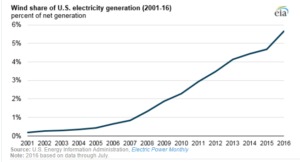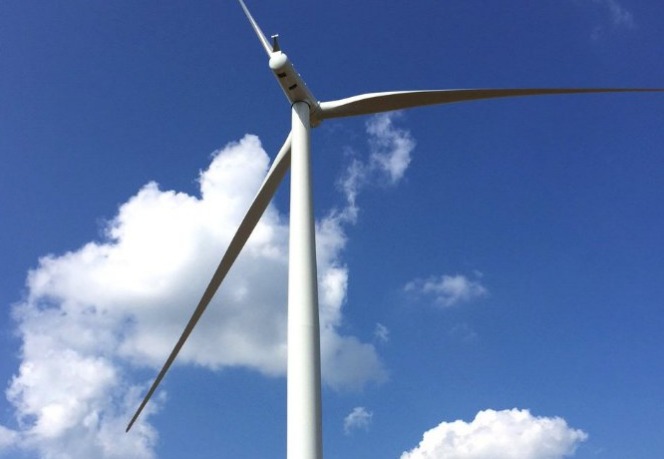The U.S. Energy Information Administration (EIA) has released a new report showing that 11 states generated at least 10% of their total electricity from wind in 2015 – a significant increase considering that as recently as 2010, only three states had at least a 10% wind share.
According to the report, Iowa had the largest wind generation share, at 31.3%, and South Dakota (25.5%) and Kansas (23.9%) had wind generation shares higher than 20%. Two additional states, Texas and New Mexico, are on track to surpass a 10% wind generation share in 2016, based on data through July. Wind generation in Texas, the highest wind electricity-producing state, made up 24% of the national total wind generation and 9.9% of Texas’s total electricity generation in 2015.
At the national level, wind’s share of total U.S. electricity generation has risen every year since 2001, according to EIA. Wind facilities produced 190,927 GWh of electricity in 2015, accounting for 4.7% of net U.S. electric power generation – representing a doubling of wind’s generation share since 2010, when the share was 2.3%. Based on monthly data through July, wind has provided 5.6% of U.S. generation in 2016.

The report notes that states with the highest wind generation shares are located in the Central High Plains and the Rocky Mountains – regions that have high wind resources.
According to EIA, the increase of wind power in the U.S. has been driven by a combination of technology changes, including improved wind technology and increased access to transmission capacity, and policy changes, such as the federal production tax credit (PTC), investment tax credit (ITC), and state-level renewable portfolio standards (RPS).
The administration notes that the PTC grants a federal tax credit on wind generation, while the ITC allows federal tax credits on wind farm investments. State RPS, meanwhile, require that a minimum percentage of electricity generation comes from renewable energy.
EIA says 29 states and the District of Columbia currently have RPS policies, and an additional eight states have renewable portfolio goals. Besides RPS, many states provided incentives – such as mandated purchases and an exemption from property tax – to encourage wind power in their states.

Images courtesy of U.S. Energy Information Administration and Electric Power Monthly.




